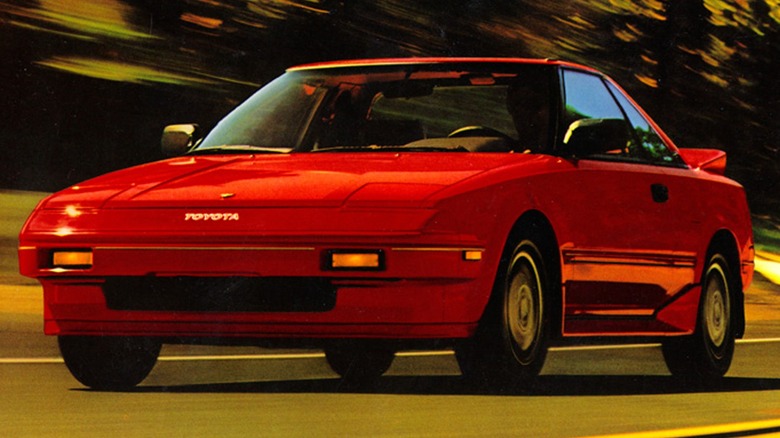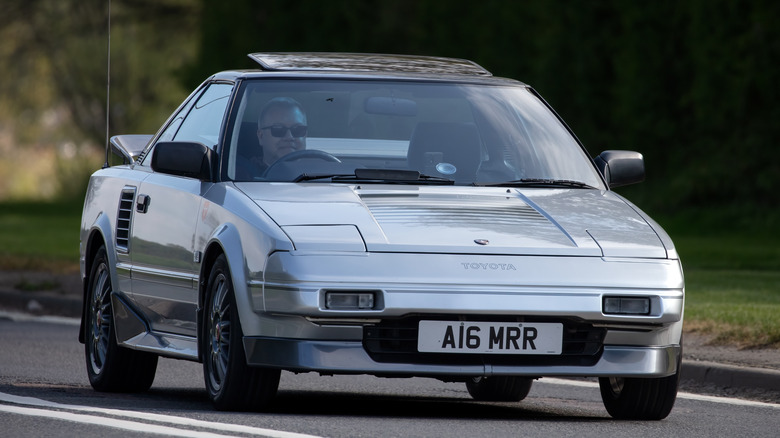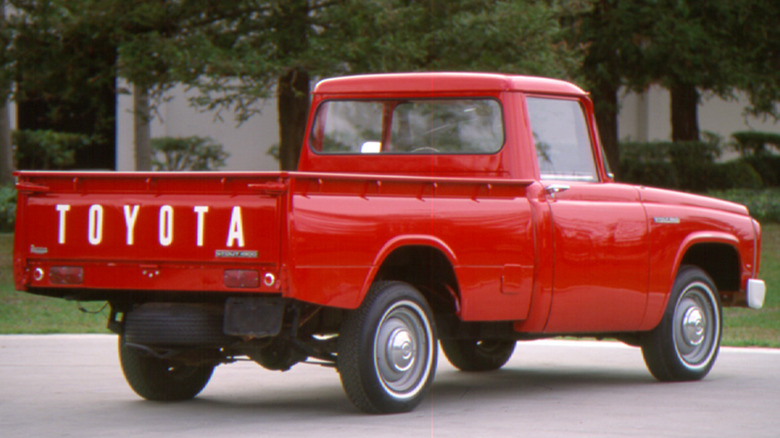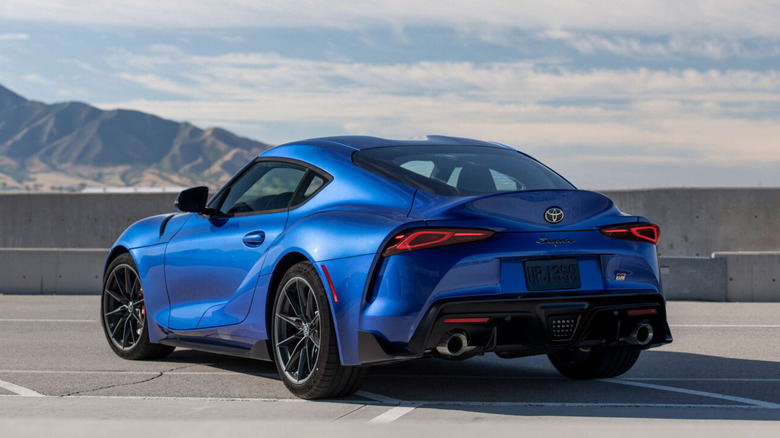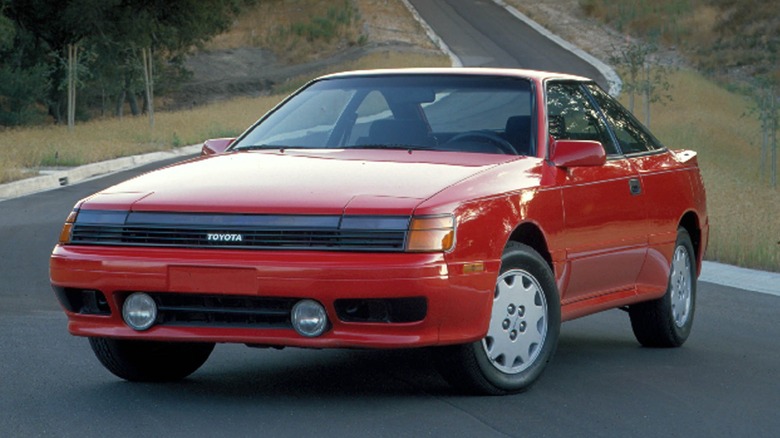4 Underrated Toyota Models That Deserve A Spot In Your Garage
There have been all sorts of popular Toyota models made throughout the brand's long and storied history. At SlashGear, we've spent a lot of time celebrating our favorite cars from the brand, from the most successful Toyotas to the most reliable ones, and have even highlighted more than a few Toyotas with epic designs. However, between the cult classics and the sales leaders, we feel that there are several lesser-known and underrated models that don't get the attention or accolades they deserve.
Both now and in Toyota's past, there are a few vehicles that could be considered underrated. Whether it's because they've been outshined by other vehicles in the Toyota lineup, forgotten by time, or just generally under-appreciated, these vehicles could serve as a enthusiast project cars or as quasi-classic daily drivers. For this list, we've combed through the lesser-known semi-modern Toyotas to find a few classics, and even one model that's currently on sale -– all for unique reasons. So here are four underrated Toyotas that potentially deserve a spot in your garage.
MR2
Affordable mid-engine sports cars are a rare breed. Many mid-engine sports cars are ultra fast, expensive, built by high-end luxury or performance brands, and that recipe often means that they're reserved for the wealthiest buyers. Once in a while though, something with a mid-engine layout comes along that's more affordable and can be attained by even frugal enthusiasts. The Toyota MR2 is such a vehicle. It was launched in 1983 at the Tokyo auto show (called the SV-3 at the time) and it hit the market about a year later. The name, MR2, stood for midship rear-drive two-seater, but it's had all sorts of fun nicknames over years like Mister Two.
The first generation MR2 was powered by a small 1.6-liter four-cylinder engine that only put out 112 horsepower, but it was light –- just 2,300 pounds -– contributing to its impressive driving and handling characteristics. The second- and third-generation models used a similar strategy: relatively low horsepower numbers, but with relatively low weight to match.
The MR2 didn't have much cargo space or a lot in the way of luxury equipment, but it was fun to drive, reasonably priced, and it was available as an open-top roadster -– all positive traits that could earn it a spot as your fun-but-affordable weekend car. Beyond that, it was available for three generations before it was discontinued, so there are several model years to choose from if you're looking to fill that MR2-shaped void in your life.
Stout
The Toyota Tacoma and Toyota Tundra are two of the most well-known names in the pickup truck game, and you may have even heard of their predecessor, the Toyota T100. However, a truck from Toyota's past that you might not know much about is the Stout. The Stout was short-lived, at least in America, where it was only sold from 1964 to 1969. Around the world, the Stout was available much longer -– from 1954 to 1989 -– but in the U.S. it never became that popular.
In the 1960s Toyota was still working to establish itself in the United States, and sales weren't high enough to keep the Stout around for very long. At the time, big pickup trucks from automakers like Ford and Chevy were significantly more visible. Beyond that, the Stout was powered by a 1.9-liter four-cylinder engine that only put out 85 horsepower -– not a lot to compete with robust American trucks.
Despite its short stay in America and its relatively low sales, the Stout is still a classic truck that deserves a fair bit of credit for its place in Toyota's history. It paved the way for trucks like the Hilux and eventually the Tacoma, all while looking positively cool along the way. With the Stout's rarity here in the states, it's bound to be a hit at any classic car show.
GR Supra
The Mark IV Supra is one of the most popular cars of all time. Its sleek design is considered timeless and tuners have been able to extract over 1,000 horsepower from its 2JZ engine. Movies like "The Fast and the Furious" have featured the Supra prominently, and its popularity has grown significantly as a result. However, a car as iconic as the Mark IV Supra casts a big shadow. The current GR Supra (and pretty much every other generation of Supra) has to live in that shadow, and as a result, it's a bit underrated.
The current GR Supra is definitely impressive. Its available with a powerful turbocharged six-cylinder engine that makes as much as 382 horsepower and 368 lb-ft of torque, it's available with a six-speed manual transmission (a rare inclusion in today's sports cars), and it's driven by the rear wheels — all the prerequisites for an engaging sports car. It accelerates from zero to 60 mph in as little as 3.9 seconds and it maneuvers well both on track or on curvy mountain roads.
Detractors (especially Supra purists) are likely to point out that the GR Supra shares much of its construction and its engine with the BMW Z4, but that connection won't be a drawback for most buyers. If you're in the market for a fun-to-drive sports car with a stylish exterior and a well-appointed interior, the GR Supra should definitely be on your short list.
Celica
While it's no longer in production, the Celica was one of Toyota's longest-lasting nameplates, launching back in the early 1970s as a stylish two-door coupe with rear-wheel drive and several different engines to choose from. The Celica was the launching pad for the all-powerful Supra, with the Celica Supra arriving in 1979 on the same platform as the standard model, but with six-cylinder power. So, technically, you could have a Celica and a Supra all wrapped up in one car. The two models would eventually diverge, and the Celica would become front-wheel drive, but it still had a lot to offer, including cool convertible variants and versions with ties to rally racing.
For seven generations, the Celica was available as a small, fun-to-drive two-door car. Depending on which generation you go with, it was generally available in hatchback or coupe body styles. Regardless of body style however, it was relatively practical and affordable for most of its lifespan. While the Celica wasn't as performance-oriented as cars like the Supra, it did have multiple engines to choose from during almost every generation of production.
The Celica lasted until 2006, spanning over 30 years of automotive history and giving shoppers a lot of choices when it comes to the era of car they're searching for. And if the rumors of its resurrection are true, you may be able to buy a new Celica sometime soon as well.
